An Englishman abroad in spring 2020
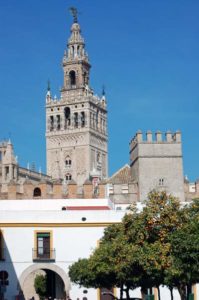
Day 1 – Monday
The flight from Manchester is delayed by about thirty-five minutes, but by the time everybody has boarded and we’re ready for take-off, it’s an hour, so we don’t arrive until midnight.
I take a taxi and it doesn’t take long to get to the centre, but the driver stops at the bottom of the road where the hotel is situated as the streets are so narrow. The hotel looks nice and the receptionist is very friendly. I practise my Andaluz and he practises his English. They speak Spanish, of course, but the most noticeable thing about the dialect is that they lop off the last letter or even syllable, as in Mucha’ gracia’ or Adio’. I fancy a drink, but there’s not much open at this time on a Monday night, so I decide to retire.
The hotel is very attractive, based around a patio with a high ceiling and the room turns out to be comfortable with an ensuite. The only downside is the three flights of stairs, but never mind, it’s good exercise.
Day 2 – Tuesday
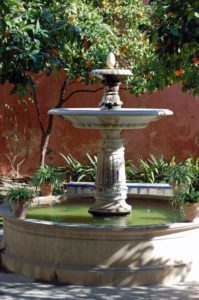
I’d been cold in the night, but too tired to do anything about it. However, I’ve found a blanket in the bottom of the wardrobe, so should be alright tonight. A quick shower and freshen up, consult the map and off we go.
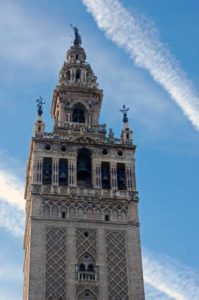
I pad down the cobbled street, turn a corner and there in front of me – yes – it’s the Giralda! Probably the most iconic symbol of Seville, the Giralda is the bell-tower of the cathedral. I continue in that general direction and soon arrive in the square outside the cathedral. Whilst looking for a good angle for a photo down a side-street, I notice a café with a free table outside, so stop for a coffee. It’s shirt and jacket weather and perfectly fine for dining alfresco in the spring sunshine. On the menu is something called a caracola, so I order one and when it arrives, sure enough, it’s a kind of spiral like a snail shell. It’s packed with dried fruit and goes really well with the café con leche.
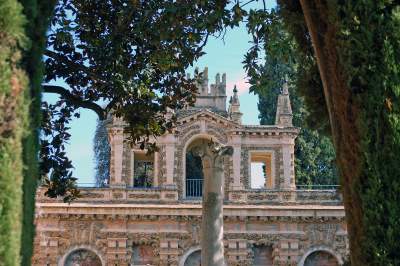
I was planning on visiting the cathedral as a somewhat predictable first port of call, but it doesn’t open until eleven. Then I notice a queue to my left – doesn’t look too long – which turns out to be for the Real Alcázar, so I tag on the end. Overshadowed a little by its famous neighbour, this place is outstanding, with its Moorish architecture and landscaped gardens second only in my opinion to the Alhambra. Commenced in 1364 by Pedro I as a royal palace, subsequent monarchs made their own additions. I spend a very pleasant couple of hours, which brings me nicely to lunch time.
One of the restaurants in the guide is a short distance away, but I miss the turn, get lost in the maze of streets and end up approaching it from the other end. No matter, here it is – Casa Plácido. I take a seat outside and have a caña – a small beer – whilst I peruse the menu. I begin with tortillitas de camarones, shrimp fritters, followed by cola de toro, bull’s tail in a rich sauce. They are delicious and accompanied nicely by an excellent twelve-year-old fino tradición, a lovely dry sherry.
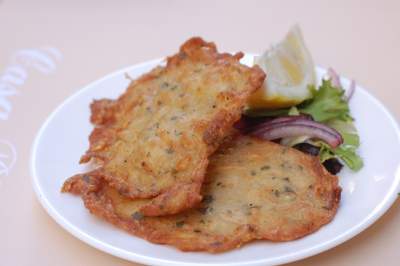

I have to try the local orange wine, vino de naranja, and very nice it is too. I look on the menu for something unusual and go for lomo con champiñones, pork with mushrooms. I try an amontillado botaina and then a thirty-year-old oloroso tradición, which is superb. The waiter is very friendly and kindly gives me a complimentary glass of thirty-year-old palo cortado. These sherries are VORS, which I discover stands for Vinum Optimum Rare Signatum, so there you go. All in all, most enjoyable and it’s a shame really that this little gem was very quiet whereas when I turn the corner, the strip of restaurants leading down to the cathedral are all packed.
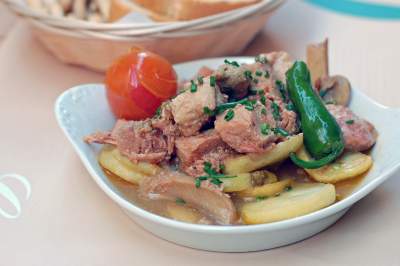
Now it’s off to Parque Maria Luisa and Plaza de España. It’s a pleasant walk and I soon arrive at the park. It’s a large landscaped area which was originally the grounds of the Palacio de San Telmo and donated to the city by Princess Maria Luisa de Orléans in 1893, but what I’ve really come to see is the Plaza de España, a semi-circular edifice which looks as if it dates from the seventeenth century, but was actually built in 1929 for the Ibero-American Exposition. I walk between some bushes and am stunned by the sight – it’s enormous and includes a canal with ornamental bridges.
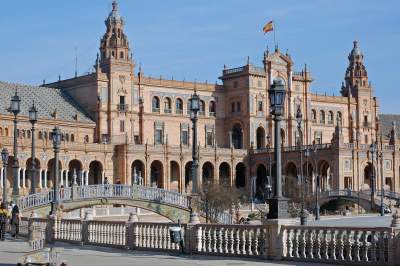
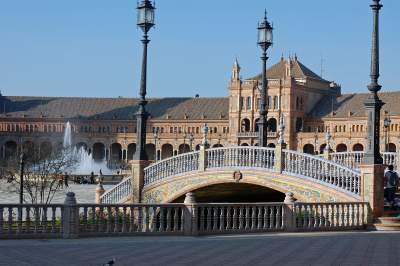
Before taking a closer look, I see some market stalls and can’t resist buying a flamenco dress with a pretty shawl for Elizabeth. The bottom of the building consists of alcoves representing every region of Spain. For the hell of it, I take a photo of the Balearics, but it is marred somewhat by a gentleman reposing on the bench.

I take my leave and wander back towards the centre. It seems like a long way and I’m pleased to stop for a refreshing pint of Alhambra Especial. It’s amusing to watch the waiter attempting to cajole passers-by into the restaurant, but despite his best efforts, without success. It turns out that the other waiter is from Brazil, so his first language is Portuguese and he is learning Spanish. As I leave, I say Gracia’ and Obrigado!
Seville is just like one expects it to be – guitar music in the streets, the smell of horses (I love the smell of horses – don’t you?) and even in February, oranges and spider plants in profusion.

When in Seville, it seems silly not to take in some flamenco, so eventually I find my way, with the help of a lovely young Sevillana who is expecting any day, to the Museo del Baile Flamenco, which is recommended as one of the best venues. There is a show about to start or one at eight forty-five, so I book for the later one and go in search of a bite to eat. There isn’t a great deal of choice in the vicinity, but I’m happy to sit outside Bar Estrella and have a beer and pez espada a la plancha, grilled swordfish steak. For a city with so many tourist attractions, the prices in Seville are very reasonable.
I leave in good time and it’s as well because, of course I get lost. Whilst I’m going around in a circle, or is it a square or a figure of eight, I don’t know, but down a side street I see the hotel, which I’d no idea was so near. Anyway, I get there sufficiently early to have a glass of red wine before the show. The compère tells us that photographs are not allowed and it’s actually a good thing otherwise I shouldn’t be able to see the show for mobile ‘phones raised in the air.
The show begins and as it progresses, it becomes increasingly painful. No, it’s really good, but I have to dig my nails into my palms to stop me clapping along to the music. There are three dances with different costumes and each enacting a different story. I don’t know if it has quite reached the stage of duende (an untranslatable word meaning something like the height of passion and usually used in connection with flamenco), but it’s definitely emotionally stirring.
I wander aimlessly in the opposite direction and come across an unassuming little bar (I can’t even see its name anywhere) where I have a couple of bottles of Estrella Damm and some chicharrones – home-made pork scratchings. On the way back I find the turn off for the hotel straight away. This is going to be one of those classic cases where I find my way around just as it’s time to leave.
Day 3 – Wednesday

I wander down to the cathedral square and decide to go to the same café – Mateos – and have another of those gorgeous caracolas whilst I wait for the cathedral to open. It’s busier today, so I sit inside. There’s a queue for the cathedral, but it doesn’t take too long. Now, please don’t think me uncultured and I would never pass up the opportunity to see the interior of a cathedral, but to be scrupulously honest, unless your interest is architecture or religious artefacts, when you’ve seen one gothic masterpiece, you’ve seen ‘em all. Nonetheless, I do spend some time inside gaping with a degree of awe. My favourite finds are the head of John the Baptist in a glass case and the tomb of Christopher Columbus.
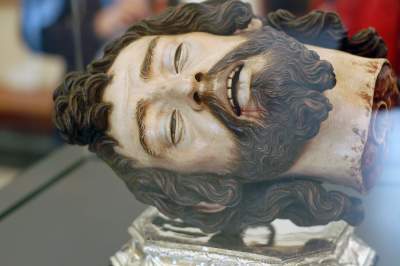
Included is entry to the Giralda. The bell-tower was originally the minaret of a mosque on the site before it was incorporated into the cathedral in the 1400s, with the belfry being added in 1568. It provides fantastic views of the city, but its ascent (and of course, subsequent descent) entails thirty-five ramps and seventeen steps so after vacillating for a while, I bottle it. The exit is via the Patio de los Naranjos, the beautiful courtyard of the orange trees. There is a long rank of horses and carriages outside the cathedral and I am pleased to notice the good condition of the horses, as it is so often not the case.

I make for the river, the Guadalquivir, and cross via the Puente de Isabel II to the district of Triana, famous as the birthplace of flamenco, home of bullfighters and for the manufacture of ceramics. I walk down the riverbank and then strike off in search of another recommended restaurant. It’s a bit of a walk, but my directions are good and I find it easily. La Gamba Blanca. Now if like me, you like an old-fashioned place full of old Spanish men and nobody speaking a word of English, that’s great, but I honestly think the average tourist using the guidebook and looking for a tapas bar might be a bit surprised. They don’t actually do tapas, just raciones and mains. I ask if I could have a mixture of fried fish – pescaito frito – and the obliging waiter says of course. When it arrives, it has everything – red mullet, tuna, squid, octopus, whitebait, all fried in typical Andalusian style. Definitely no room for pudding, but perhaps a fino and a café solo. Very nice.
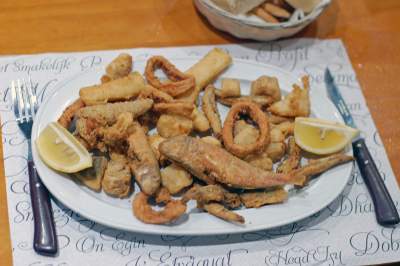
I make my way back to the river and cross over the San Telmo bridge by the Torre del Oro, the 13th century tower. I walk up to Puerta de Jerez and stop off at La Sureña for a large Cruzcampo for €2. The barman is very friendly and we have a laugh as we practice our Spanish and English respectively. I enjoy a leisurely stroll and have a glass of oloroso outside Cafeteria las Tapas by the Real Alcázar where I watch the world in general and the horses and carriages in particular go by.
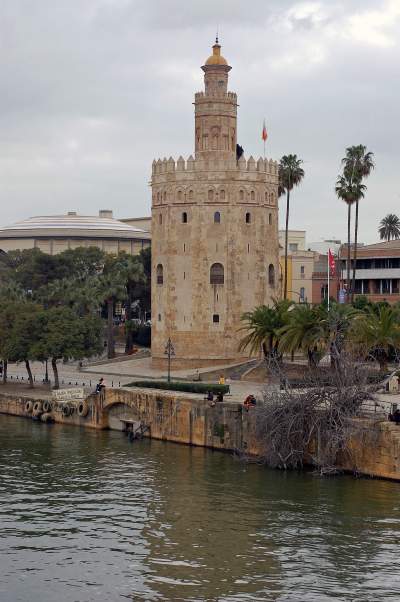
My chosen venue for the evening is called El Traga and is actually not far from the hotel. When I arrive, I am looking in the empty building when a waitress opens the door and tells me they don’t open for another thirty minutes. I’m about to apologize and leave when she says I am welcome to have a drink and some ham until they begin service. Churlish to refuse such a nice invitation. I have a 6.4% Cruzcampo Gran Reserva and some very good Ibérico ham. The guidebook says this is a traditional tapas bar, but the modern styling begins on the exterior and continues throughout. A quick glance at the menu tells you that this is something else.
After about ten minutes, the waiter tells me that the chef says he is ready and I can order as I have been waiting a while. I protest that I am fine and they mustn’t go out of their way, but he insists, so my first choice is Huevo @ 65°, Espuma de Payoyo, Migas Crucientes; egg cooked at 65° with payoyo cheese foam and crispy breadcrumbs. They have a number of wines available by the glass, so I begin with Habla del Silencio from Extremadura; syrah, cabernet sauvignon, cabernet franc, and tempranillo.
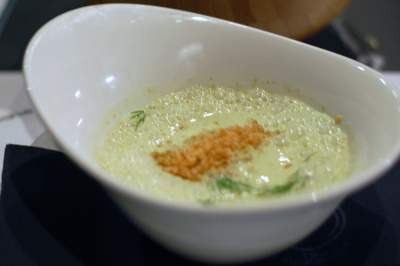
My second choice is Lomo de Bacalao de Anzuelo, Royal de Ortiguillas; line caught cod loin with sea anemone, and the wine is Quadis from Cádiz; merlot, syrah, petit verdot, 12 months in French and American oak.
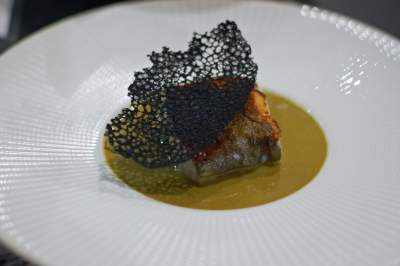
Next, I have Foie Gras, Albaricoque, Vino de Naranja, Torta de Aceite; foie gras with apricot, orange wine and olive oil biscuit. Now, I know there is an ethical problem with foie gras and I do feel guilty, but this is one of the most delicious things I have ever eaten. To accompany, Obieta Negre from Priorat; garnacha, fina tinta, and cariñena.
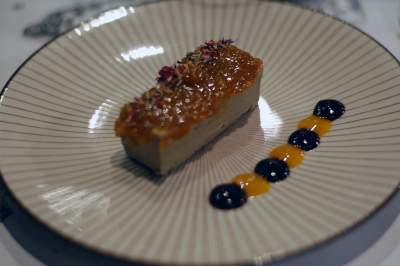
Lastly, I have Carrillada Ibérica, Mole Poblano, Huevo de Codorniz; pata negra pork cheeks in a mole poblano sauce, topped with a quail’s egg. The waiter says that while it might look messy, the idea is to stir the egg into the sauce and it certainly works. The wine is Encomienda from Toro; tinta de toro, six months in oak. Admittedly, some of these dishes may have called for a white or rosé, but I do have a predilection for red and the opportunity to try these is too good to pass up.
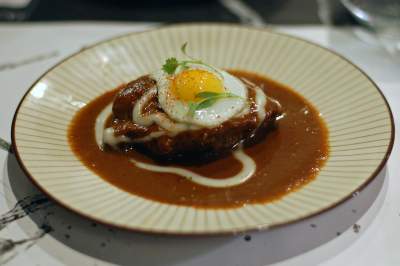
I finish with an excellent Oloroso Solera. The bill comes to €62, which is more than reasonable. Everything has been superb; the food and drink, the service, and the ambience. I potter back to the hotel with an air of extreme satisfaction.
Day 4 – Thursday
I check out of the hotel, but leave my suitcase in the office as I don’t need to be at the airport until the evening. I make my way to the Casa de Pilatos, which is actually just past El Traga where I dined the previous evening. Having got my bearings, I walk a little further on and find a café where I have a coffee and croissant. Casa de Pilatos is a palace which was built in the sixteenth century. It is based around a large open patio with a central fountain and includes an attractive garden. I decide to opt for the guided tour of the upper floor where the apartments feature many works of art. The guide gives the accompanying talk in both Spanish and English and it is interesting and informative.
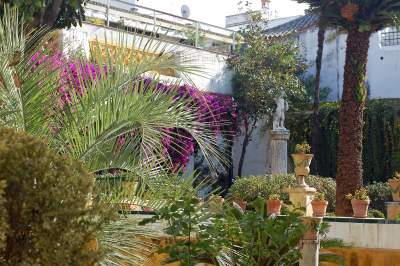
The forecast for today was overcast, but now the sun is out and it’s turning into a lovely day. Seville is home to a bar, dating from 1670, which claims to be the place where tapas were first invented, so I have to go. It’s actually not so far from here and I’ve written down some directions which lead me without any difficulty to Plaza de Terceros, but from there, I cannot find the restaurant, try as I might. I resort to what probably should really be the obvious thing and use my ‘phone.
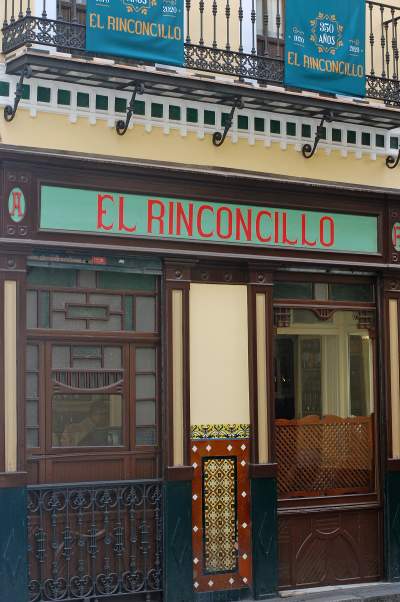
I arrive at my destination, El Rinconcillo, in a few minutes and go inside. It’s really atmospheric, with hams hanging from the ceiling. Atmospheric and packed. I make my way to the dining room and there is no chance of a table, but the waiter says I can sit outside. Sure enough, there are a few tables outside in the warm sunshine, so I sit down. I look at the menu and can’t see any tapas, then I realise that this is actually La Trastienda del Rinconcillo, a small offshoot next door. Anyway, I go for Arroz Chacinero, a mixed rice dish similar to a paella.
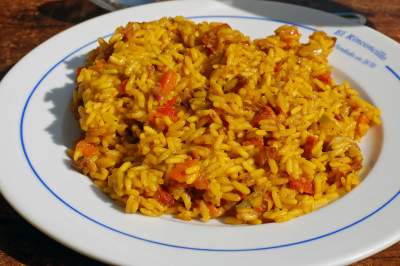
I wend my way back toward the hotel and go to collect my suitcase, thanking the receptionist for my pleasant stay. The bus station is just beyond the Puente de Isabel II, so I walk by the cathedral then down past the bullring and follow the river. I have plenty of time and have worked up quite a thirst so I stop at El Cairo for a cold beer and some olives. I find the bus station and although I still have plenty of time, there’s no point hanging around here, so I get the next bus to the airport. Only €4, a bargain. A young man at the opposite side of the bus takes some sheet music from his bag and begins to sing the notes, quite beautifully. Unfortunately, the bus fills up and he is obliged to stop. A few teenage girls get on and one of them sits next to me. Remarkably, she has quite bad body odour. The young lady sitting opposite glances at me and opens the window.
I arrive at the airport in good time, so take advantage of a special offer on a jamón baguette and bottle of Alhambra Especial. The sandwich is surprisingly good and I enjoy it in the company of a large number of Seville fans. I don’t know who they’re playing, but they’re obviously looking forward to the trip. Probably a good job I’m not wearing a Real Mallorca shirt.
The plane takes off on time with no problems. I’d decided it was worth four pounds for a window seat and as there is only one other passenger on the row, a young lady, we’re able to spread out a little and doze.
When I get back to the car, I have to spend some time de-icing it. Welcome home.
Footnote:
When I returned home, I remembered that Todmorden author William Holt had written about a visit to Seville in his book, “Under a Japanese Parasol”. I dug out my copy and realised it was exactly one hundred years ago, to the month. Much of what he says could have been written today and not only that – as he goes back to his hotel, I recognised the name of the street and as he veers off to the left, my hotel is on the right!
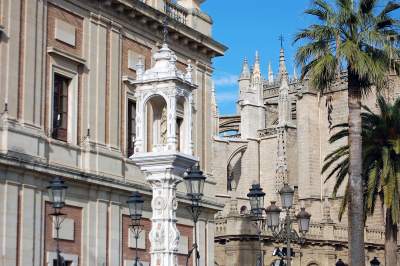
Hotel
Hostal Sierpes
Coral del Rey 22,
41004 Sevilla
95 422 4948
www.hsierpes.com
Restaurants
Bar Estrella
Calle Estrella 3,
41004 Sevilla
95 421 9325
www.barestrellasevilla.com
Casa Plácido
Mesón del Moro 5,
41004 Sevilla
95 456 3971
www.casaplacido.es
El Rinconcillo
Calle Gerona 40,
41003 Sevilla
95 422 3183
www.elrinconcillo.es
El Traga
Calle Aguilas 6,
41004 Sevilla
691 88 54 27
www.eltraga.com
La Gamba Blanca
Calle Trabajo 2,
41010 Sevilla
95 428 2940
facebook.com/gambablancasevillatriana
Restaurante Mateos
Calle Mateos Gago 2,
41004 Sevilla
644 33 57 84
